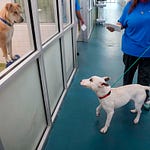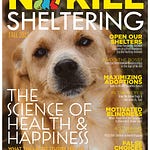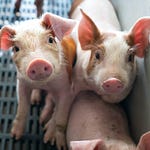What’s it like to be a dog being experimented on in a laboratory? A cat in the kill room of an animal “shelter”? A cow in a slaughterhouse? A mouse on a glue trap? A deer being hunted? A pig on a factory farm?
Animals have eyes and they see with them, the way we humans see with ours. They have ears and they hear with them; again, just like us. They have legs and they walk with them. They have mouths and they eat with them and so on. The idea that the eyes of animals see, the ears of animals hear, and the legs of animals walk the way they do for us is so obvious, it seems unworthy of comment. Few would doubt that the anatomical structures we share with animals function for them just as they function for us. This seems obvious, logical.
And yet, we convince ourselves that there’s an exception: the brain. Though animals have brains, they don’t think with them like we do: they have no self-awareness, no concept of death, no ability to love, no mother-baby bond, no understanding of what’s to come. It’s all just instinct.
Why is it better for humans to believe this? To pretend that this is true?
If there is no conception of death, a “shelter” can kill cats without any moral repercussions. It’s just like going to sleep, says PETA, except they never wake up.
If there is no mother-baby bond, we can take a newly born calf and turn him into veal, while we take his mother’s milk — his birthright — for our own children to drink.
If there is no understanding of what’s to come for the animal entering a slaughterhouse, then killing animals to eat them poses no moral imperative not to.
Intuitively, we know that none of this is true. How can it be that every body part of an animal functions the way it functions for us, except the brain?
It is often said that our understanding and knowledge of death separates the human animal from all other animals. We alone know that we will die — that one day, suddenly or slowly, our life, our loves, our dreams will end. Surely this awareness sets us apart from the rest of the animal kingdom, we say, pointing to some of our greatest art, music, and literature — all inspired by what we know: that death awaits every living being. And yet, how very odd it is that we should be the only animal to know what life ultimately has in store for us. We share biological histories and physiologies — DNA, eyes, muscles, nerves, neurons, hormones — with other animals, and these may lead to similar behaviors, thought processes, and emotions — even about death.
The author is right: we are not the only animal to know what life ultimately has in store for us. As scientists now admit, death is a great equalizer among different species. But it is not the only one; so is the capacity to love —“love may be natural selection’s most compelling force, driving us and our fellow animals to care beyond reason for our families, loved ones, and children.”
Pigs, for example, have been found to be optimistic and agreeable, prefer familiar individuals to strangers, are sensitive to the experience of others, make decisions based on empathy, and have unique personality traits that overlap that of humans. They are not alone.
Based on (non-invasive) MRI scans of brains, Dr. Gregory Berns shows how consciousness and self-awareness and similar subjective experiences are not exclusive to humans or even unique among a select few species in the animal kingdom. They are the rule, not the exception.
Using some of the latest findings in comparative neurobiology — specifically the study of how different parts of the brain are connected to each other — he offers scientific proof of what we already intuitively know but conveniently ignore: that when the “structures in the brains of animals” are “organized in the same way as the corresponding parts of our brains,” and “these parts look the same” and “function[ ] in the same way,” then the subjective experiences are the same or at least similar.
Specifically, if the animal has a cortex — like dogs, cats, mice, deer, cows, and pigs — the animal is sentient. And “Beyond sentience lies consciousness and self-awareness.” As such, “its subjective experience can be understood by degrees of similarity to ours”:
With similar brain architectures for the experience of joy, pain, and even social bonds, we can assume that animals experience these things much like we do, albeit without the words for those subjective states…
If you want to know what it’s like to be a dog being experimented on, a cat in the kill room of an animal shelter, a cow in a slaughterhouse, a mouse on a glue trap, a deer being hunted, or a pig on a factory farm, imagine how you might experience those things:
An animal who is aware of his or her own pain and suffering may well experience the existential fear associated with imminent death. And awareness of other animals’ fear can only heighten such terror.
Terror. The same thing we would feel.
That alone should make us kinder to animals, intolerant of their killing, and unwilling to engage in actions which cause them to suffer. We shouldn’t torture a dog in a laboratory. We shouldn’t kill a cat in an animal “shelter.” We shouldn’t hunt deer. We shouldn’t kill rodents with glue traps. We shouldn’t confine a pig on a factory farm. “[L]ogically,” says Dr. Berns, “we shouldn’t eat a cow…”
But deep down, when one strips away the self-serving justifications, all of us already knew that. As does Dr. Berns, who admits — like so many others — that he tragically continues to do so anyway.















For whom the bell tolls